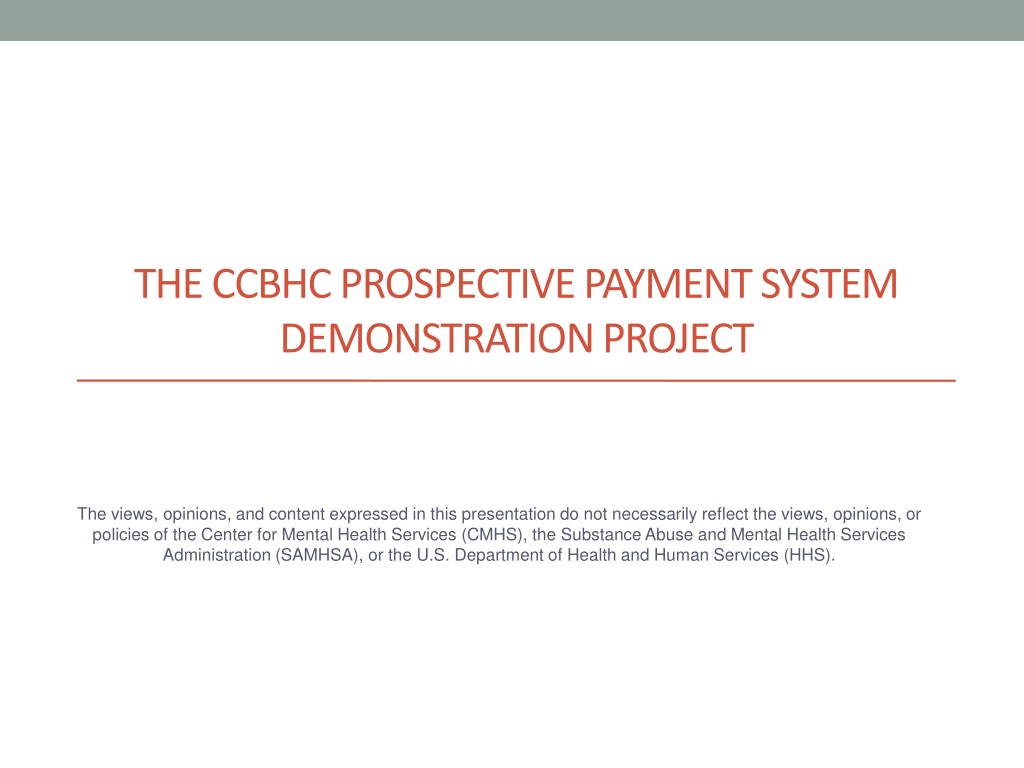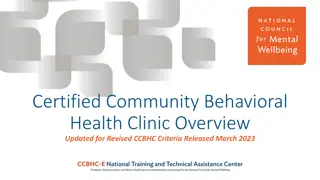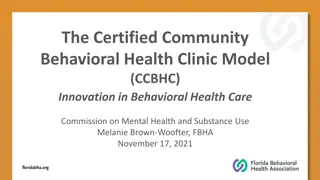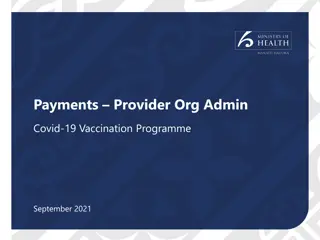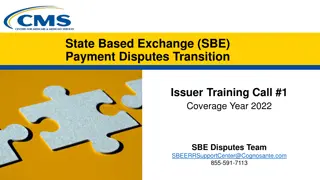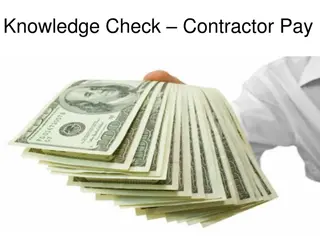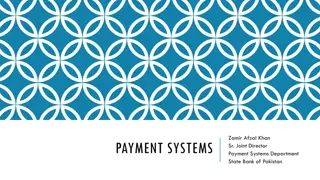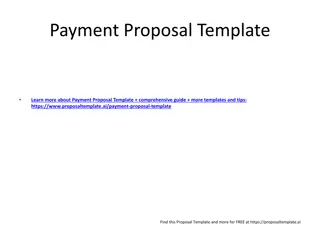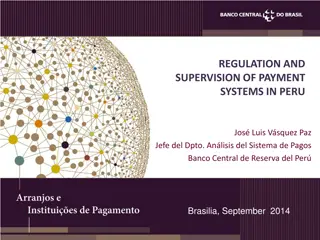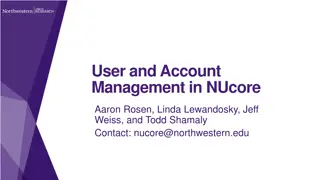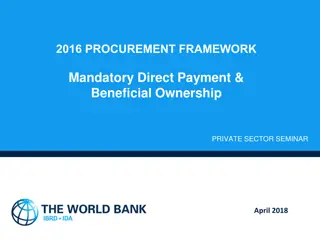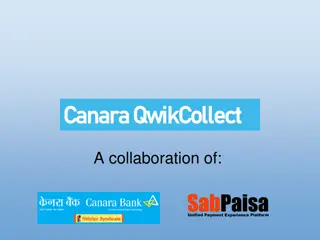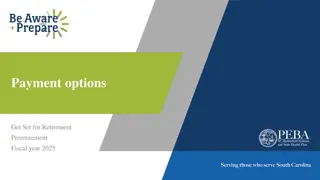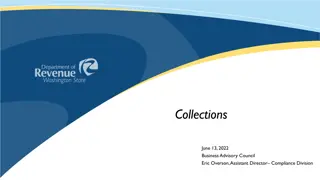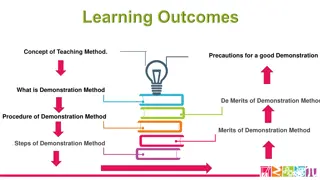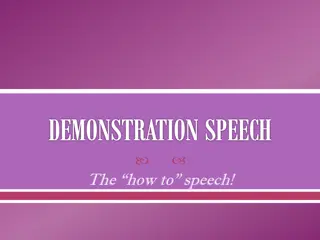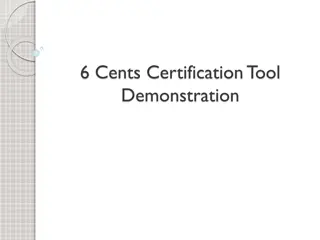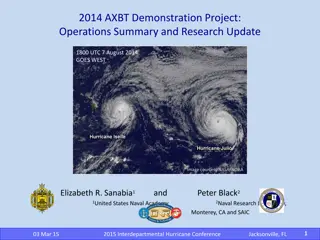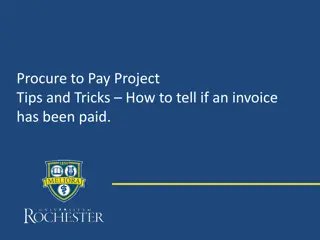Understanding the CCBHC Prospective Payment System Demonstration Project
The CCBHC Prospective Payment System Demonstration Project, authorized by Section 223 of the Act, aims to pilot a Medicaid Prospective Payment System for mental health services provided by certified Community Behavioral Health Clinics. This project is significant as it establishes national standards, offers cost-based reimbursement, and enhances access to quality care, potentially expanding service offerings and improving care quality.
Download Presentation

Please find below an Image/Link to download the presentation.
The content on the website is provided AS IS for your information and personal use only. It may not be sold, licensed, or shared on other websites without obtaining consent from the author. Download presentation by click this link. If you encounter any issues during the download, it is possible that the publisher has removed the file from their server.
E N D
Presentation Transcript
THE CCBHC PROSPECTIVE PAYMENT SYSTEM DEMONSTRATION PROJECT The views, opinions, and content expressed in this presentation do not necessarily reflect the views, opinions, or policies of the Center for Mental Health Services (CMHS), the Substance Abuse and Mental Health Services Administration (SAMHSA), or the U.S. Department of Health and Human Services (HHS).
What is the Demonstration Project and why is it important? AVariety of Names The Excellence in Mental Health Act (EMH Act) Co-sponsored by Senator Blunt The Protecting Access to Medicare Act of 2014 (PAMA) Section 223: Demonstration Programs to Improve Community Mental Health Services The CCBHC PPS Demonstration Project
What is the Demonstration Project and why is it important? The Federal Requirements Section 223 of the Act authorizes CMS/SAMHSA to Pilot a Medicaid Prospective Payment System (PPS) for mental health services provided by certified Community Behavioral Health Clinics (CCBHCs) for two years, in no more than eight states. Award planning grants to assist states in preparing to apply to participate in the demonstration project. Requires a national evaluation of the demonstration
What is the Demonstration Project and why is it important? The Federal Requirements Section 223 of the Act Authorizes CMS to reimburse the selected states at an enhanced Medicaid match rate Though not mentioned in the statute, CMS/SAMHSA have given states the option to implement a form of Pay-for- Performance as part of the Demonstration Project Timeline July 1, 2017 through June 30, 2019
What is the Demonstration Project and why is it important? Why Is This Important? It establishes a place for community behavioral health organizations in federal statute. It establishes national standards for organizations providing community behavioral health services. It provides an opportunity to implement cost based reimbursement It has the potential to assist in expanding the array of services, improving access to care, and increasing the quality of care
6 What is the Demonstration Project and why is it important? State Responsibilities Based on an assessment of need, establish Populations of focus Required services and staffing Required evidenced-based, promising and best practices Based on SAMHSA certification criteria, designate Certified Community Behavioral Health Clinics Based on CMS guidelines, establish a Prospective Payment System for CCBHCs Based on SAMHSA reporting requirements, collect and report outcomes efficiency, effectiveness and health status
8 What is a CCBHC? The CCBHC Paradigm A non-profit or governmental organization Serving a specific geographic area Employing evidence-based, best and promising practices Coordinating care and providing a comprehensive array of community behavioral health services To the residents of the area and specific populations of focus Regardless of their ability to pay Across the lifespan: children, adolescents and adults Measuring and reporting specific outcomes regarding efficiency, effectiveness and health status
9 Comprehensive Array of Community Behavioral Health Services Screening, Assessment and Diagnosis Crisis Services* Treatment Planning Outpatient MH and SUD Services Primary Care Screening and Monitoring Peer and Family/Caregiver Supports Targeted Case Management Psychiatric Rehabilitation Intensive Community-based MH Services for Members of the Armed Forces and Veterans SAMHSA requires CCBHCs to directly provide *May be provided by an existing, state approved crisis response provider
10 Populations of Focus Adults with severe, disabling mental illness Children and adolescents with serious emotional disorders Children, youth and adults with moderate to severe substance use disorders Children in state custody who have behavioral health disorders Young adults with behavioral health issues identified as in need of treatment by the courts, law enforcement, community mental health liaisons, or emergency rooms
11 Services and Programs Crisis Response Services Must meet Access/Crisis Intervention standards for serving children, adolescents and adults including 24- hour hotline and mobile crisis teams Primary Care Screening and Monitoring Conduct a health screen of all individuals Must meet CMHC Healthcare Home standards for serving children, adolescents and adults Psychiatric Rehabilitation Must meet CPR Program standards for serving children, adolescents and adults
12 Services and Programs Outpatient Mental Health and Substance Use Disorder Treatment Must be accredited by CARF or The Joint Commission, or certified by DBH, to provide outpatient MH and SUD services for children, adolescents and adults Targeted Case Management Targeted case management is case management provided to individuals in the populations of focus Must employ or coordinate with a Community Mental Health Liaison Must directly provide, or collaborate with, an Emergency Room Enhancement (ERE)program
13 Services and Programs Peer and Family/Caregiver Supports Must employ Certified Peer Specialists and Family Support Providers Screening, Assessment, Diagnosis, and Treatment Planning Must be accredited by CARF or The Joint Commission
Evidence-based, Promising, and Best Practices Cognitive Behavioral Therapy (CBT) Motivational Interviewing (MI) Wellness Coaching Medication Assisted Treatment (MAT) Eye Movement Desensitization and Reprocessing (EMDR) Tobacco Treatment Specialists Zero Suicide Integrated Treatment for Co-occurring Disorders (ITCD) Trauma Informed Care
Policies and Procedures Access to care: face-to-face initial assessment Crisis - Immediate Urgent 1 business day Routine 10 business days Update comprehensive evaluations at least every 90 days Document each individual s PCP Confirm appointments to external providers Make reasonable attempts to track admissions and discharges of all consumers to inpatient and residential programs Make reasonable attempts to follow-up within 24 hours of discharge from a hospital Screen all adolescents and adults for depression
Service Areas with Participating CCBHCs
Participating CCBHCs by Service Area SA 1 Family Guidance Center SA 11- Pathways Behavioral Health SA 3 Swope Health Services SA 12 Burrell Behavioral Health SA 13 North Central Mo CMHC & Preferred Family Healthcare SA 4 ReDiscover SA 5 CMHS, Inc. SA 14 Mark Twain Behavioral Health & Preferred Family Healthcare SA 6 Tri-county MHS, Inc. SA 7 Pathways Behavioral Health SA 16 Crider Center SA 8a Clark CMHC SA 17a Pathways Behavioral Health SA 8b Pathways Behavioral Health SA 19 Family Counseling Center SA 9 Ozark Center SA 22 COMTREA SA 10 Burrell Behavioral Health SA 25 Places for People
Prospective Payment System (PPS) Cost Reports document Actual and anticipated costs for providing CCBHC services Anticipated CCBHC visits Visit A day in which there is at least one face-to-face encounter, or one eligible telehealth encounter, between a qualified practitioner and an eligible consumer involving the provision of a CCBHC service. PPS Rate = Actual & Anticipated Costs/Anticipated Visits Cost per Visit No matter how many or few CCBHC services an individual receives in a given day, the CCBHC is paid the same PPS rate
Pay for Performance (P4P) Reimbursement is based on achieving specified results Incentivizes doing whatever it takes to get results Quality Bonus Payment Nine performance measures Goals Meet the statewide benchmark Show improvement over the CCBHC s FY 16 performance Annual bonus payment equal to at least 1% of total PPS payments for meeting the goals
QBP Measures New SUD Dependence with initiation of SUD treatment New SUD Dependence with engagement in SUD treatment Suicide Risk Assessment for Major Depressive Disorder(Youth) Suicide Risk Assessment for Major Depressive Disorder (Adult) Adherence to Antipsychotic Medication for Schizophrenia Follow-up within 7 days post Hospitalization for MH (Adult) Follow-up within 30 days post Hospitalization for MH (Adult) Follow-up within 7 days post Hospitalization for MH (Youth) Follow-up within 30 days post Hospitalization for MH (Youth)
CCBHC PPS Demonstration Project Moving from Fee-for-Service to Prospective Payment with A Pay-for-Performance Component
What Happens When It s Over? It s really a Pilot Program There are Options New Legislation Medicaid Amendments and Waivers
